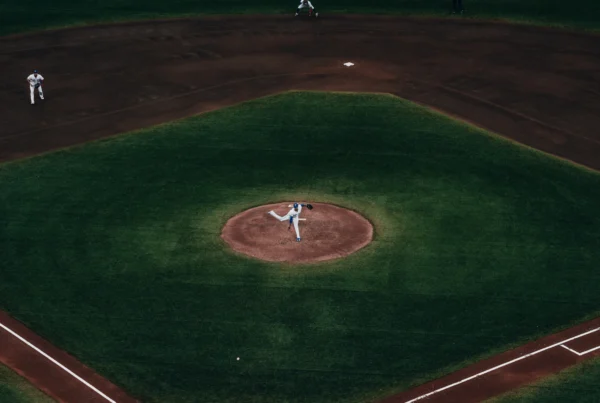Everyone always talks about “just be yourself”, or, “be confident” but what does that even mean, and more importantly, how to I do that? If you’re struggling to figure it out, we’ve got some ideas worth considering.
Valiance’s motto is borrowed from Henry David Thoreau’s line, “Go confidently in the direction of your dreams. Live the life you’ve always imagined!”
Valiance stands by this calling in the work that we do, yet what is confidence and how do we obtain it?
For us, confidence is the sense of certainty one gets when they know that their best effort is enough. This then places the attention on targeting effort, the thing that we all can control, as the singular variable that can be shaped. If your effort is poor, you’re unlikely to perform confidently. Didn’t study for that exam in time? Slept in, ate too much, drank too much, chose to procrastinate, or maybe just misprioritized? Those are all examples of decisions that are made that highlight effort, or the lack thereof.
If you focus on really giving your best effort, relative to that day, or relative to that moment, and you genuinely feel that’s your best effort, then that’s enough, and you can come away knowing you did your best–in fact-confident that you did your best.
Pay Attention to Progress
Dr. Nate Zinnser, the Director of West Point’s Performance Psychology Program, and Mental Performance Coach talks about hall of fame baseball player, Tony Gwynn and his routine around cataloging his progress. Zinnser references Gwynn having three types of videos that he would review of his at bats. One category would be reserved for at bats that Gwynn felt as though he had made excellent connection with the ball. Out and out excellent performances. His second category was reserved for when he felt he made the right decision, regardless of the outcome of the at bat. Sometimes making the right choice doesn’t always mean that the outcome works in your favor. The third category of videos was reserved for bad choices, or bad at bats. After sorting the videos, Gwynn reportedly would delete all the videos from the third category. No need to remember things that won’t help you succeed.
Gwynn’s categorization of performances is a remarkable example of guiding one’s attention. Gwynn chose what he wanted to see, and made a conscious decision to guide his attention in that direction.
Lesson: Pay attention to your progress, and quiet the negativity.
Seek Opportunity, Especially When It’s Hard
Chicago Cub’s Outfield, Kyle Schwaber needed his ACL and LCL reconstructed after colliding with his fellow teammate while trying to make a catch back in 2016. Given the injury, he was going to be out for quite a while, and while the team was undoubtedly going to miss him, the real valiant story here is one of perseverance through adversity.
Schwaber was on the precipice of doing great things for a truly legendary Cubs team that would go down in history by winning the 2016 World Series. He had every reason to give in, give up, and feel sorry for himself when he got injured. As with anyone, when the reality of their age and slowly declining physical prowess sets in, it can take a massive toll on how one thinks of themselves and their capabilities. This is only normal, but imagine just how magnified this experience is at the professional level?
What’s truly remarkable is how Schwaber didn’t give in, didn’t give up, and gritted out his recovery. After surgery, Schwaber reportedly sat in the batter’s box, right behind home plate, and watched over 1,000 baseballs be delivered from a pitching machine. Read that again. After completing knee surgery which required him to be on crutches, Schwaber decided to train the thing that he still could–his eyes–and focused on watching the spin rate, the curve, and the speed of over one thousand pitches from a pitching machine. He was going to be ready when his time came, and he wasn’t going to let a knee repair stop him from being out there preparing.
Find the silver lining and you stand to gain the confidence you need to be ready when your time comes.
Practice, Yes, I’m Talk About Practice
We all know the value of practice. From Allen Iverson’s now infamous “practice” press conference to the more common household phrase of “practice what you preach”, to Lombardi’s “practice doesn’t make perfect, only perfect practice makes perfect”, we’ve heard it all. But I think sometimes we underestimate just how much practice serves as a confidence booster, just as it does to help us grow in whatever skill we’re trying to learn. Perhaps it’s an obvious take, but when you’re literal life is on the line, sometimes being confident in knowing what you’re doing is exactly what you need.
Alex Hannold, is a professional rock climber. He’s also a rock climber who performs some of his climbs “free solo”, meaning he climbs rock faces often completely alone, and without any ropes. The art and athleticism of free solo climbs amplifiers the ordinary risk of climbing by eliminating the only thing protecting a climber–the rope. Hannold has set the record for not only being the first person to free solo climb El Capitan, a rock face in Yosemite National Park (and the featured picture of Valiance’s site), but also set a record time for free solo climbing El Cap.
To do this death defining feat, Hannold had to practice to gain the confidence needed to climb it free solo. Hannold didn’t just practice the routes ten, twenty, or even fifty times. Hannold practiced the routes over ninety times before attempting this feat.
Practice isn’t just about getting better. Practice is about gaining confidence as you get better. So the next time you have some big project, task, or challenge awaiting you, break it down into manageable chunks–kind of like Hannold’s routes–that you can practice, and keep practicing until you’re confident.
Onwards and upwards!




